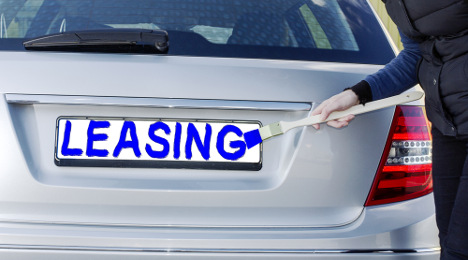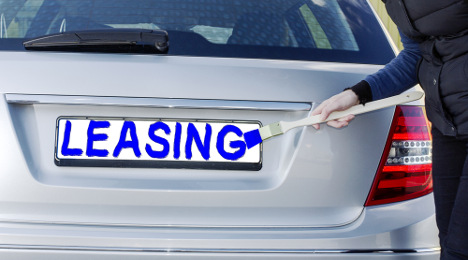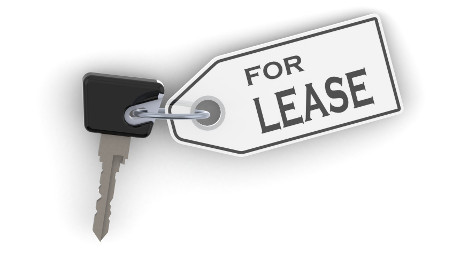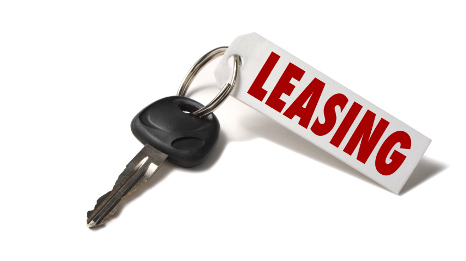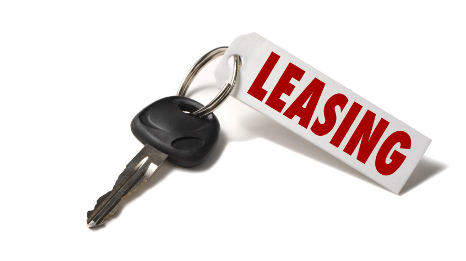With a record-breaking 2015 under our belts, and 2016 shaping up to be another strong year for new-car sales, many dealers are feeling confident for the coming months.
If you’re in the used-car business, however, April’s showers may not bring May flowers unless you have the right tools and strategies in hand.
Profitable trade-ins and eager buyers will begin to disappear as the traditional tax return-driven sales cycle comes to a close, while diminished profitability and increased inventory are forecasted.
Proprietary data collected from more than 2,000 dealerships shows that average total gross profitability for used-vehicle sales peaks in March and declines through the remainder of the year — a trend that will be exacerbated by the more than 800,000 lease maturities hitting the market. A prepared dealer will have plans to take advantage of this inventory influx.
As the dealership network weathers this influx of lease maturities, it’s likely that as supply rises and dealers are forced into a period of heightened competition, gross profits will decline.
To best position themselves for success — and, in some instances, survival — dealers must rely on compelling data from their technology partners to shape strategic plans, identify lucrative remarketing opportunities and develop profitable exit strategies for each vehicle they acquire.
Maximize profitability
The key to maintaining front-end gross is to evaluate historic and market data at the point of appraisal. Your priority should be identifying “core” vehicles: the models that sell fastest, most consistently and most profitably. These vehicles are prime remarketing opportunities, ensuring quick and profitable sales and reducing overall risk of wholesale losses.
A top-performing dealership’s inventory is composed of 40 percent to 50 percent “core” vehicles. An average dealership’s inventory hovers around 29 percent and drops lower when accepting non-core trade-ins in exchange for closing new-car sales.
In addition to using technology and data to identify a store’s — or group’s — most lucrative remarketing opportunities, dealers must resist the urge to succumb to tunnel vision. Too often, sellers commit to a one-size-fits-all approach and stock only their store’s brand or only vehicles that have done well in the past.
As the “traditional” customer continues to evolve and has significantly more choice, it’s critical that managers leverage a fully integrated inventory management platform to ensure that science, rather than anecdotes and gut feeling, is driving their vehicle-acquisition strategy.
In today’s fast-changing market, a fully integrated inventory management platform is a requirement. Use a fact-based approach: Analyze purchase behaviors not only at stores, but also across brands, group partners and geographic regions.
Build a data-driven strategy
The average dealership close rate was 49 percent in January, and after rising to 51 percent during tax-refund season, it declined steadily — as was the case with front-end gross — through the end of the year, dropping to 46 percent in December. Often, this close-rate decline is preventable by ensuring vehicle pricing is aligned with market trends.
Many dealerships stocked up for the planned increase in used-car business in February through April. As such, now is the time to consider an exit strategy for those remaining surplus vehicles by building an aggressive plan to divest inventory as sales begin to slow. Data demonstrates that used-vehicle front-end gross and dealership appraisal close rates decline in the second half of the year.
As a means of developing an inventory reduction strategy now, before the inevitable pressure of lower sales volumes hits, dealers should aggressively develop a data-driven plan. Dealers can use technology to determine each vehicle’s profit level per day and then carefully monitor it throughout the month.
To prevent significant wholesale losses, dealers should develop a 30-day strategy for moving inventory and plan to keep vehicles on the lot no longer than 40 days to avoid wholesale losses. If a store typically doesn’t do well with a particular model it acquires, sellers can lean on technology to achieve a balance between discount and profit based on current trends.
As sales begin to decline, aggregated inventory management data demonstrates that reconditioning costs will begin to rise, aside from a dip through the summer. To effectively reallocate assets and make use of free cash flow during that temporary dip, dealers should more actively pursue the use of digital marketing to highlight both core and non-core vehicles that may be approaching that 30-day mark.
By using a data-driven strategy to price vehicles in line with prevailing market trends, sellers protect themselves by increasing vehicle turns, reducing the likelihood of profits eroding from wholesale losses.
As the “perfect storm” of second-half stagnating sales, increased in-market vehicle availability and a slackening in consumer demand hits the market, smart dealers will increasingly look to data to assist in:
a) Monitoring reconditioning costs to keep them down in order to free cash for marketing-related activities
b) Leveraging market data to make solid retail or wholesale decisions at appraisal
As wholesale losses increase in summer months, dealers should rely on data to make smarter inventory decisions and to take in core vehicles or create an exit strategy for newly acquired vehicles, such as transferring them to an affiliated store that sells a particular model more effectively or evaluating those tagged for wholesale accordingly with wholesale pricing in mind.
Leverage technology
Pricing vehicles appropriately — and in line with market, brand and group trends — needn’t carry the same level of “accuracy” as the average five-day weather forecast. The use of inventory management tools creates visibility across dealerships, positioning them to turn vehicles for a profit faster and reducing the likelihood they’ll hold onto vehicles too long, negatively impacting grosses.
Technology is the great enabler: It allows dealers to seamlessly link across departments and empowers them to integrate complex data sets, nurturing customers and prospects throughout the sales process.
Following heightened first-quarter sales, inventory levels rise by a total of 10 percent through year’s end. Use a technology platform to:
a) Decrease the amount of time vehicles remain in inventory
b) Devise an exit strategy for vehicles that are sitting on the lot
c) Maximize front-end gross profits
Careful examination of a vehicle’s daily profitability is a dealer’s secret weapon.
By using technology to seamlessly link and drive profitability across departments, dealers are able to more effectively generate greater revenue on the sales floor and in the sales drive. For example, with a data-mining platform that constantly scans a dealership’s DMS for customers in a position to spend money at that store, a dealer can match a customer interested in a particular make and model and sell the vehicle to him or her prior to making it available to the public. This is an extremely powerful tool that significantly reduces the time and resources expended during the sales process.
To prevent significant wholesale losses, develop a 30-day strategy for releasing inventory. Consider transitioning inventory to a group partner. If a non-core vehicle has lingered too long, parse data to create an exit strategy, achieving a balance between discount and profit based on current trends.
Effectively engaging a comprehensive analytics suite that leverages technology not only to capture data, but also to make informed decisions is how the best-performing dealerships weather the storm. Inventory management technology should be integrated with CRM to ensure matches are made and potential buyers are engaged before competitors have a chance to engage them (data mining) and also to nurture them through the sales process (CRM).
The storm is predictable
Lease returns are forecast to flood the market in 2016, and used-car sales will be the key to weather the storm. Dealers who effectively use the data and the technology available to them will be better positioned to maintain volume and gross.
The approaching down cycle is predictable, but if a dealer is properly prepared, it can do better than hunker down and ride out the storm. Inventory management, vehicle merchandising and market-facing strategies are all individual aspects of creating a strong and effective strategic plan. By preparing with core modeling, smart inventory purchases, exit strategies and data-driven decisions to maximize profits, your store can emerge stronger than before.
Mike Waterman is DealerSocket’s divisional vice president and can be reached at [email protected]. The full Market Action Guide can be downloaded at dealersocket.com/MAG.
Experian Automotive revealed a study on Friday indicating that leasing as a financing option for new vehicles has grown 76 percent since the company began publicly tracking the data in 2008.
Additionally, the study determined the upward trend of leasing has resulted in a rising surplus of vehicles coming off lease. In fact, according to the analysis, more than 1.8 million vehicles will come off lease by the end of 2016, looking at projections for April through December.
“With such a large volume of vehicles coming back into the market, consumers, dealers and lenders will want to better understand the options available to them so they are able to take action,” said Melinda Zabritski, senior director of automotive finance for Experian, who presented study findings on Friday as the NADA Convention & Expo began.
“Whether it is deciding to lease again or buy used, restocking inventory or marketing to potential borrowers, gaining insight into these trends will provide the knowledge necessary to make smarter decisions for all parties involved,” Zabritski continued.
The study also looked at the areas that have the greatest volume of vehicles coming off lease. Experian learned that the top three demographic market areas are New York, Los Angeles and Detroit.
When looking at vehicle types that are leased most often, Experian’s analysis showed there have been some significant shifts in consumer preference. Current leasing vehicle segment preferences include entry-level crossover utility vehicles, standard midrange cars, lower midrange sedans, near-luxury/upscale vehicles and premium crossover utility vehicles.
However, when looking at the vehicles currently being leased compared with those coming off lease, the analysis indicated that there has been a surge in the percentage of full-size pickups and entry-level sport utility vehicles being leased, with growth of 56 percent and 79 percent, respectively.
On the other hand, Experian noticed upscale luxury vehicles and alternative-power/hybrid vehicles have seen a decline in the volume of on-lease versus off-lease vehicles by 28 percent and 50 percent, respectively.
“As vehicle prices have been on the rise, we have seen consumers using several tactics to keep their payments more manageable. Leasing over the past several years has grown as consumers are drawn to the lower monthly payment,” Zabritski said.
“What’s interesting, however, is that the types of vehicles are changing. Instead of fuel-efficient hybrids, consumers now are leasing full-size pickups, SUVs and CUVs,” she went on to say. “So, what happens three years from now? Will gas prices be what they are today, or will dealers have a more difficult time moving these types of vehicles when their leases mature?”
From a model perspective, the top leases returning to market (which represent 28 percent of all leased vehicles returning to market) include:
—Toyota Camry
—Honda Civic
—Honda Accord
—Toyota Corolla
—Honda CR-V
—Ford Escape
—Nissan Altima
—Ford Fusion
—Lexus RX 350
—Toyota RAV4
A central theme to a special edition of the Used Vehicle Market Report from Edmunds.com released today — and the 2016 used-car market, in general — is the heavy amount of cars coming out of leases.
There are several tentacles to this off-lease surge. For one, it represents a steady stream of vehicles ideal for certified pre-owned — an area of the market (along with used-car values) that Edmunds is projecting to have “yet another record year.”
It’s also leading to a younger used-vehicle fleet.
Edmunds said in its report that more than half (55 percent) of dealership used sales last year were for cars ages 3 and under, with signs pointing to that percentage climbing this year.
Driven by off-lease volume, the average age of a used vehicle sold by a dealership dipped from 4.6 years in 2014 (and in both of the two years prior) to 4.4 years in 2015, Edmunds said.
The boom in off-lease cars hitting dealer lots, Edmunds said, “was noticeable last year and now will be even more pronounced since 27.1 percent more cars were sold via three-year leases in 2013 compared with 2012.”
Auto Remarketing caught up with Edmunds’ Ivan Drury, who shared his thoughts on the flood of leases coming back into the market and its impact on the age of used cars that dealers are selling.
When it comes to pricing of these cars, this can be a double-edged sword, he said.
Younger vehicles typically means higher prices. However, he explained, a lot of the lease returns are coming from segments like the compact car, midsize car and subcompact car. This can push overall used pricing down due to the fact that these are usually lower-priced segments.
Edmunds’ report shares more on the segmentation of lease returns. It points about that two-thirds of off-lease volume will likely come from just five segments. Here’s how segments ranked in terms of the most popular leases of 2013:
1. Midsize cars
2. Compact cars
3. Compact crossover SUV
4. Entry-luxury cars
5. Midsize crossover SUV
One interesting nugget to take away from this is that the midsize car, compact car and entry-luxury car are among the “less popular” categories today. And they’re coupled in the top five with the “very desirable” compact crossover SUVs and midsize crossover SUVs, Edmunds said.
The company also notes in the report: “For all of 2016, fuel costs have been projected to remain stable around the current low level. This will give consumers who are on the fence about buying a truck or SUV further reason to purchase in these segments, fueling demand and increasing values.”
Touching on the off-lease/CPO connection, Edmunds points out that these cars typically have a listing price about $1,500 higher than a non-CPO used car.
“The high volume of CPOs in the market mix is helping to boost the industry average used-car transaction price,” the report notes.
Stronger economy’s impact on vehicle age
Today’s economy is largely stronger than, say, six or seven years ago when the recession and auto downturn was still being felt. .
So, we asked Drury to what degree he believes a more positive trending economy is having on vehicle age. He estimated the average trade-in age to be about 6, noting that some consumers are still waiting it out to trade their cars in. However, the off-lease push greatly counteracts that.
“We do see that there are enough off-lease vehicles to offset those really old trade-ins,” Drury said.
“Remember back in 2009, 2010, the sales for new cars were so low that there’s that dearth; there’s that huge dip in what’s even available from then. So, if you look at that average trade-in age, even though it says roughly 6 years, you’re also seeing stuff that’s 10 years old, 9 years old that’s being traded in, still, for a new,” Drury said. “And that average really is, it’s like a dip in between these two humps of really near-new … and then you’ve got the really old. But it’s still enough so that these off-lease are pulling into this younger category.”
Term lengths: threshold or sweet spot?
On the new-car side, Edmunds is seeing folks stretch payments out, Drury said, which reflects the common monthly-payment mentality of car shopping. He expects to see the same in used, particularly due to the amount of off-lease cars coming back.
With many of those ending up as CPO — again, a pricier option that non-certified used — “term lengths either have to go up or they’re just going to have to start denying people, and I think they’ll definitely choose the longer term lengths over saying, ‘you can’t buy this car,’” Drury said.
Average used-car transaction prices were at $18,552 in 2015, an all-time high, Edmunds said. With off-lease units often representing future CPO sales and pricier segments (trucks, SUVs) catching consumers’ eyes, look for that average to remain lofty, Edmunds said. As Drury alluded to above, that should drive longer loan term lengths. Edmunds said in its report that less than $400 per month is typically the range used-car buyers go for.
In 2015, the average term on a used-car loan was 66.2 months, according to Edmunds. The data in the report’s chart — which goes back to 2010 — shows a consistent rise over those six years.
“Used-car bargain hunters may benefit from another market trend: much near-new inventory is coming from car rental agencies whose vehicles are generally in service for a year or two and then dropped back into the marketplace,” Edmunds said in the analysis.
There were roughly 2 million vehicles purchased by rental agencies last year, up from approximately 1.8 million bought in each of the three years prior, according to Edmunds.
Lease rankings
The segment rankings discussed earlier are based on leasing volume, not penetration (the latter of which you might expect to lean more towards luxury vehicles).
“It’s amazing, though, how big the volume has become over time. That growth … it’s exploding everywhere,” Drury said. “And it’s across the board too. If you look at it from, even the (penetration) rate, every category has gone up.”
That includes large trucks, which typically would be expected to be a finance deal or for fleets/businesses.
Sharing more thoughts on the increasing lease penetration, Drury said: “We keep thinking, ‘OK, well, it might taper off,’ but at the same time, I feel like the consumer preference and it makes it so easy, especially for people who are uncertain about what the future holds or even what brand, I would say that leasing’s always the best way to test the waters because, hey, you don’t like it, you’re sending it back.”
And in 2016, they'll be doing so in droves.
Swapalease.com reported on Wednesday that lease credit approvals are beginning to bounce back after a dip in the numbers late last year.
Site officials highlighted vehicle lease credit approvals for the month of February finished at 70 percent, an uptick from the January mark of 63.6 percent.
As a whole, Swapalease described the automotive industry as continuing to thrive as it did last year. Site executive vice president Scot Hall explained that increasing numbers in lease credit approvals may aid in ensuring that this year follows closely in the footsteps of last year, yielding record sales numbers overall and adding to the high lease penetration rate of nearly 32 percent.
“Lease credit approvals are slowly starting to rise again after a mediocre couple of months,” Hall said.
“Rising credit approvals means that this year might be another record year for the auto industry as well as its focus on aggressive lease deals,” he added.
Although lease credit approvals are increasing, Swapalease noted the industry remains watchful of consumer confidence levels.
The site mentioned consumer confidence is down 14 percent from a year ago, making this the lowest level that analysts have seen in the past seven months.
“Despite the recent growth in lease credit approvals, the decline in consumer spending could be a factor that stands in the way of overall auto sales growth potential for 2016,” Swapalease said.
Take a guess. Which vehicle had the largest share of the new-vehicle lease market in the fourth quarter?
The answer: the Honda Civic, which comprised 3.2 percent of all new-car leases, according to an infographic shared by Experian Automotive.
Next up was also a Honda: the Accord with a 2.6-percent share. Two Toyotas followed (Camry at 2.5 percent, RAV4 at 2.4 percent), then the Ford Escape and Honda CR-V were tied for fifth with 2.2-percent shares of the new lease market.
Rounding out the top 10 were the Ford Fusion (2.1 percent), Toyota Corolla (2.1 percent), Chevrolet Silverado 1500 (1.9 percent) and the Nissan Altima (1.9 percent).
In the same infographic, Experian points out that leases represented 28.87 percent of all all new vehicles purchased in the fourth quarter. This was a record high and up from the 25.11 percent share in Q4 2014.
The average term on a new lease is 36 months, Experian said.
All told, just over 64 percent had leases that were 25 to 36 months; 26.64 percent had leases between 37 and 48 months; 8.77 percent signed leases for 13 to 24 months; and a marginal amount (0.49 percent) had leases between 49 and 60 months, according to the firm.
During this week’s CBA LIVE 2016 Conference in Phoenix hosted by the Consumer Bankers Association, integrated customer analytics solutions provider Earnix is unveiling its new tool dedicated to off-lease vehicle remarketing and asset disposal optimization.
Using what the company described as a highly-effective analytics solution, Earnix is positioning itself to help auto finance companies to determine the right timing, pricing and channel to dispose of returned leased vehicles.
“This solution is generating interest in light of the major surge in off-lease vehicles that are headed to the U.S. vehicle market,” Earnix said in a news release.
The company added that this tool is an important component of the Earnix Auto Finance analytical solutions that were released at the end of 2015. Earnix Auto Finance analytical solutions is designed to increase automakers’ and finance company’s market share and profitability by optimizing auto finance products, distribution, pricing, rebates and incentives.
“During the next few years, the off-lease vehicle inventory in the U.S. used car market is expected to increase tremendously and as a result the market will experience a reduction in used-vehicle prices,” Earnix vice president of marketing Aviv Cohen said.
“Lenders will have to work smarter to guard their profits in their leasing portfolios. Being able to optimize performance of asset remarketing and disposal strategies will be a crucial first step in maintaining a competitive edge in this environment,” Cohen went on to say.
For more information visit www.earnix.com.
The fact that lease penetration notched another all-time record last quarter, representing 33.6 percent of all new-car financing, didn’t come as a surprise to Experian Automotive.
Leasing, along with used cars, has made more financial sense than buying new for many consumers, Experian said in an analysis accompanying its latest State of the Automotive Finance Market report.
The average monthly new-vehicle lease payment during the fourth quarter was $412 (compared to $408 in Q4 2014), according to Experian. Meanwhile the average new-car loan payment was $493 (up from $482). For used cars, the average monthly payment was $359 (up from $355).
“People shop for vehicles largely based on monthly price, and right now, average dollar amounts for new-vehicle loans are soaring,” Melinda Zabritski, senior director of automotive credit for Experian Automotive, said in the analysis.
“In order to stay within their budget goals, we have seen that more consumers — even those within the prime and super-prime risk categories — are turning to leasing and used vehicles as cost-effective alternatives to buying new,” she added.
Sharing more details about the leasing environment, in particular, Experian’s data indicates that nearly 29 percent of new-car sales in Q4 were leases. That has followed a similar upward trajectory as the aforementioned growth in leasing as a percentage of all new-car financing.
In a separate report from Edmunds.com, director of industry analysis Jessica Caldwell said there were approximately 346,800 leases in February. That represents nearly a third of new-car transactions, according to the data.
But here’s the vital kicker, the analysis said: the bulk of those cars will resurface and play a big market role as pre-owned in three years.
Edmunds has more on that in its 2015 Used Vehicle Market Report, including how leasing will affect certified pre-owned.
Experian Automotive said Thursday it has launched a new report called the Vehicle Lease Maturity Report that aims to provide detailed information about late-model used cars coming off lease.
And there will be quite a few of those this year — 3.1 million, to be precise, Experian predicts.
The new report will provide industry professionals with insight on these off-lease cars by year, make and model at a DMA or ZIP Code level. The goal is to give users a better understanding of how these cars will impact the used market.
“Lease rates have continued to rise and set record highs. However, the result is an influx of late-model off-lease vehicles. In fact, lease maturities are expected to reach 3.1 million vehicles in 2016, which is up from 2.3 million last year,” said Melinda Zabritski, senior director of automotive finance for Experian.
“We designed the new report to help industry professionals understand how many vehicles will be coming off lease by make, model and geography," Zabritski continued. "This type of information helps to manage everything from inventory, resource allocations, incentives and valuations to overall marketing execution.”
The year began with lease credit approvals down, but levels are rising slowly from December lows.
That's according to trends Swapalease.com spotted on its own site, as the company said car lease credit approvals started the year off lower than trends showed during the last two quarters of 2015.
But January’s performance definitely showed an improvement from the December decline.
According to the site, January auto lease credit approvals finished the month at 63.6 percent, up from the December rate of 54.5 percent that caused leasing approvals to end the year on a “down note.”
"While lease approvals have been slightly down over the last few months, it's difficult to say this is any meaningful trend at this point, especially given the sales success seen in showrooms currently," said Scot Hall, executive vice president at Swapalease. "The numbers do bear watching more closely, though, as several more months of this level of activity could indicate a softening of the overall credit environment for consumers and car shoppers."
That said, sales in the overall auto industry are up near record levels, but the year-over-year surge has seemed to “begun to cool off,” according to Swapalease.
The site’s analysts explained the vehicle lease credit approvals rating “mirrors other closely watched economic indicators which have been mixed lately.”
Also, keep in mind, the lease credit approvals rating moved around a bit during the first and second quarter of 2015, as well, before picking up toward the latter half of the year.
If you’re embracing technology as a dealer, you’re likely already swimming in a sea of acronyms. You’ve got your CRM. Your DMS. You’ve got things covered from SEO all the way to F&I. But perhaps a lesser known acronym, VRM, or vehicle relationship management, seems to have a bit more vague definition depending on whom you ask.
But if you ask Roger Penske, Penske Automotive Group’s chairman and chief executive officer, what VRM means to him, he may tell you how it means trying to hold on to a car throughout the retail process, from the first sale all the way to its third, perhaps.
Penske Automotive hosted its fourth-quarter and full-year financial results conference call on Thursday, and one question fielded by Penske resonated with the topic of VRM: How does Penske Auto see the impending used-vehicle volume increase from the expected wave of off-lease vehicles? Is it a certified pre-owned opportunity? What’s the net effect on the company?
Pointing out that used inventory is actually down by roughly 1,000 units overall from where they were a year ago, Penske said he sees it as an opportunity to not only work on customer loyalty, but also keep the cars coming back again and again to bolster gross profits.
“I’ll give you a quick example,” he said. “In Atlanta, where we have two BMW stores that do over 300 used cars a month, probably 10 percent would be coming out of their loaner car fleet every month, another 10 percent would be non-BMW trades, and the rest are BMW.
“I think the ability for us to be able to recondition those, we get the benefit of that in our shops, in the parts and service, and then the ability to utilize some of the OEM’s programs,” Penske said. “That’s one of the things I don’t think people realize … both Mercedes and certainly BMW — and I know Toyota does — they have some very attractive programs on used cars that come out of loaner service or come off lease. Especially if you CPO them. So we’re going to take advantage of those.”
Penske says the company is aiming for a 50 percent to 60 percent loyalty rate from his off-lease customers – whether that means they re-lease that same car, buy it, or choose to lease or buy another vehicle. Keeping that initial vehicle to be sold again and again — that’s Penske’s idea of VRM.
“We want to keep that vehicle, we want to take the vehicle from the customer off-lease, we want to sell or lease it to a second person and then get it back and then retail it at the end,” Penske said. “There’s some real opportunity for gross profit on each vehicle. We don’t want to lose those vehicles as they come through the cycle.”


